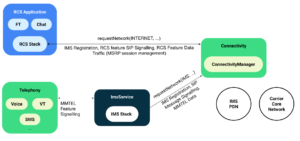As the web continues to evolve, more developers are taking advantage of powerful front-end frameworks like React and Angular. These frameworks allow developers to create dynamic, interactive user experiences quickly. However, to create truly remarkable experiences, developers must also leverage powerful back-end technologies like RESTful APIs. With the help of the Docker registry by JFrog, full automation with REST API can be done for microservices and containers.
RESTful APIs
For those who may not be familiar with the concept, RESTful APIs are application programming interfaces that use HTTP methods to interact with clients. It provides access to data from different sources or services using a standard set of procedures. In other words, it’s a way for various applications or services to communicate without knowing about each other’s specific implementation details. They use a request/response structure in which requests are made using particular HTTP verbs such as GET, POST, PUT, or DELETE. RESTful APIs allow developers to create powerful web applications that can be used to retrieve data from various databases or services. As such, they play an essential role in modern web development projects.
Integrating With Front-End Frameworks
Integrating a RESTful API with popular front-end frameworks like React and Angular can be done in several ways. For example, many developers prefer using AJAX (Asynchronous JavaScript and XML) requests as an easy way to make calls between the two technologies. Another popular technique is called Fetching, which involves making HTTP requests directly from the browser using JavaScript code. Finally, some third-party libraries can be used for more straightforward integration.
When Integrating Restful APIs With Front-End Frameworks Like React and Angular, There Are Several Key Considerations to Keep In Mind:
- Ensure all requests/responses adhere to the appropriate HTTP verb (GET, POST, etc.).
- Ensure proper error handling is in place.
- Utilize caching techniques, when possible, to minimize redundant calls for data requests/responses.
- Securely store sensitive information (such as passwords) within the application’s back-end codebase instead of within the client-side codebase, which would be accessible to hackers via network traffic sniffing techniques.
- Monitor application performance regularly for signs of slowdowns due to inefficient API calls or inefficient UI design choices, such as overuse of JavaScript libraries or too many nested components within a single page UI element structure.
Benefits of Using Restful APIs & Front-End Frameworks Together
Using RESTful APIs in conjunction with popular front-end frameworks like React and Angular offers numerous benefits for developers. Firstly, it allows them to easily access data from different sources or services without writing additional code or worrying about compatibility issues between other systems. Secondly, it reduces development time by eliminating the need for manual coding when retrieving data from multiple sources. Finally, integrating these two technologies can help improve performance because all the data is stored on one server instead of being spread across multiple databases or services.
Are There Any Potential Drawbacks to Using This Approach, And If So, What Are They?
The main potential drawback to using a RESTful API with front-end frameworks is the complexity of managing multiple requests and responses. As the number of calls increases, it can become challenging to track which calls were made and what the expected results should be. In addition, there may be extra costs associated with purchasing additional storage space if large amounts of data are being transferred between different services. Finally, since web applications are vulnerable to malicious attacks, developers must ensure their code is secure and contains no potential security vulnerabilities before deploying it into production.
Tips for Debugging Errors
When integrating a RESTful API into your application, ensuring that all requests and responses adhere to the appropriate HTTP verb (GET, POST, etc.) is essential. Additionally, you should always use proper error-handling techniques to ensure any potential errors are correctly handled.
Monitoring application performance regularly will help you spot and address any slowdowns due to inefficient API calls or inefficient UI design choices, such as overuse of JavaScript libraries or too many nested components within a single-page UI element structure.
If you encounter any unexpected behavior or errors when integrating your RESTful API, consider using a debugging tool like Postman to isolate and fix the issue quickly. Test your code on different browsers and devices since some cases may be specific to a particular browser or device. In the end, you can check the server logs regularly for any errors due to server-side issues.
Implementing authentication, authorization, and secure communication between your application and the API
When integrating a RESTful API into your application, authentication, and authorization are essential to protect user data. Consider using OAuth2 or JSON Web Tokens (JWT) for authentication, as these are widely accepted standards in the industry. For authorization, ensure that requests are sent with valid credentials that only give the user access to the requested resources.
To secure communication between your application and the API, implement SSL/TLS encryption to prevent data from being intercepted by malicious actors. Additionally, you should securely store sensitive information, such as passwords, within your application’s back-end codebase instead of within the client-side codebase, which would be accessible to hackers via network traffic sniffing techniques.






More Stories
How to Effectively Remove ChocoEukor from Your Android Device
From Pixels to Perfection: Mastering the Art of Web Design
How to Stop TinyTask: 10 Effective Techniques for Gamers and Tech Enthusiasts